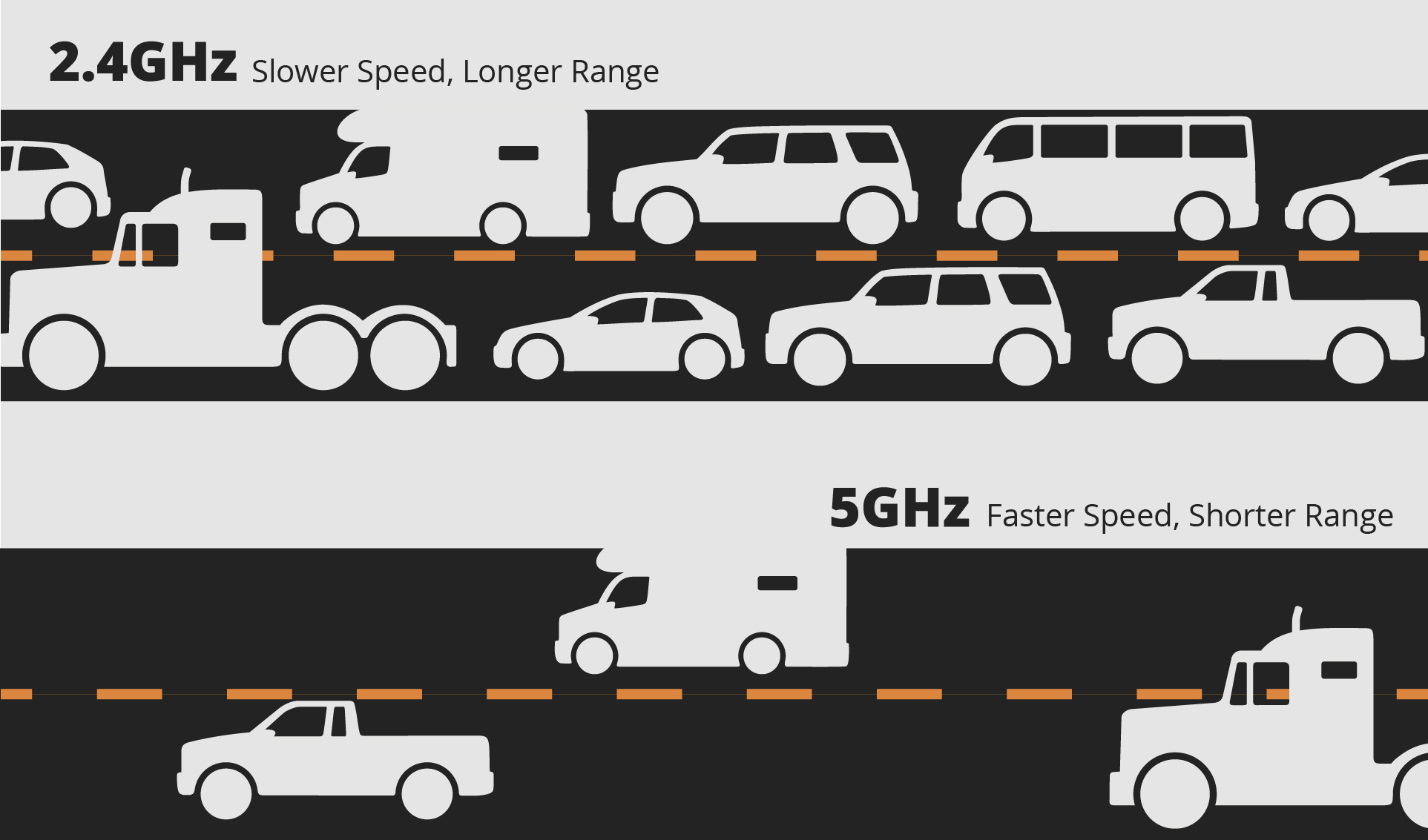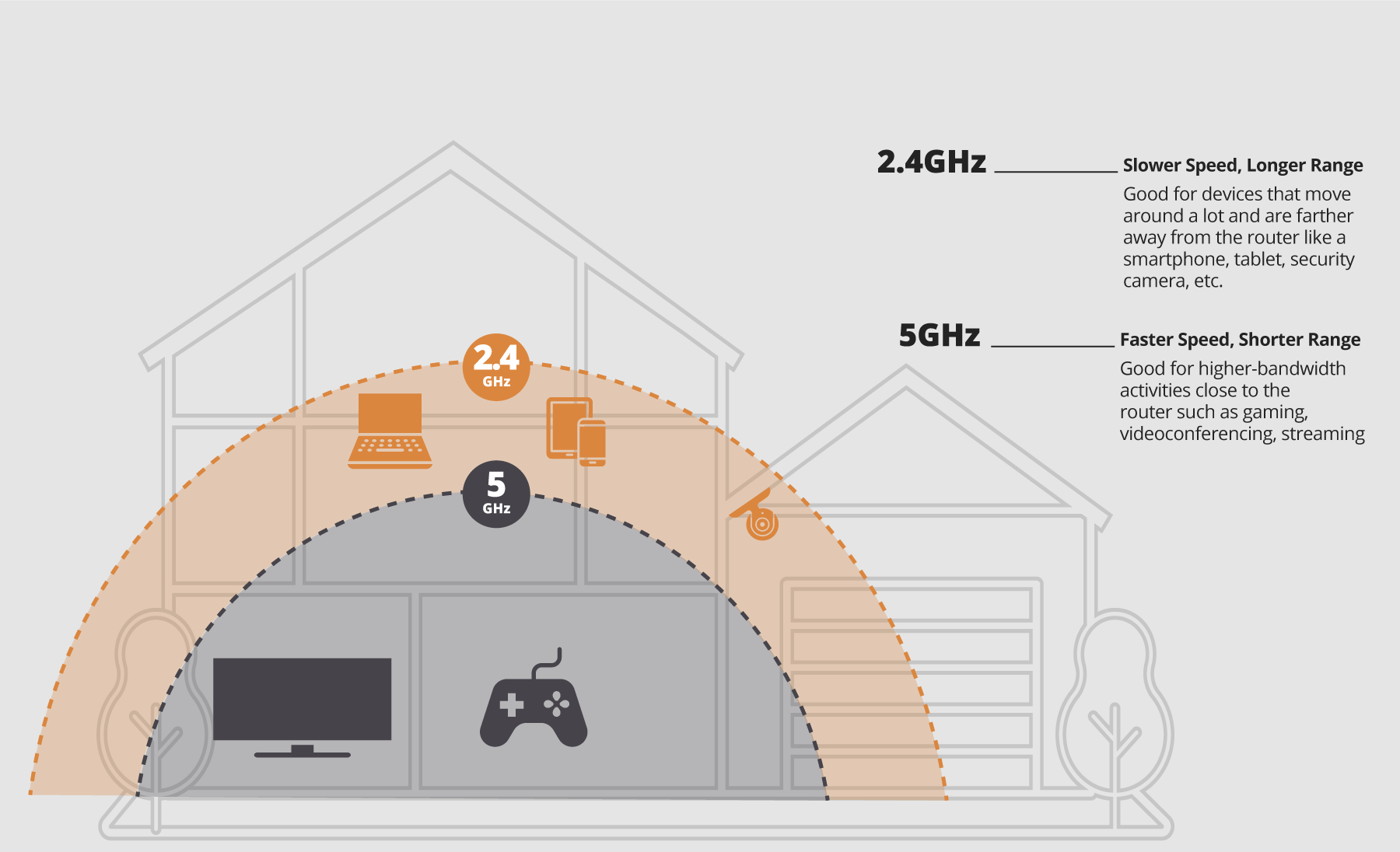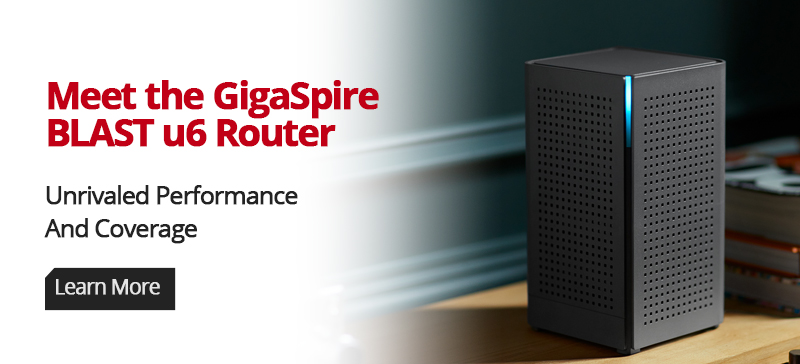Understanding the Difference Between 2.4 GHz vs 5 GHz
WiFi routers are faster and more versatile than ever, offering many powerful new features. One important feature is sending data over two different radio frequencies or “bands”: the 2.4 GHz band and the 5 GHz band. Routers that use both bands are called “dual-band” routers.
To get the most out of your dual-band router, it helps to understand the differences between these two frequencies and how the router uses them both to give you the best possible home WiFi experience.
How do dual-band routers work?
Imagine a single lane highway that carries all the traffic both in and out of town. If it’s a fair-sized town, that road could get pretty congested at times, and vehicles traveling on it can interfere with each other. Now imagine if that same road was widened into two lanes. Congestion would be halved, and it would be able to carry twice as much traffic.
WiFi is a lot like that.
In the beginning, there was only one WiFi frequency: 2.4 GHz—a single road. As WiFi became more popular, the 5 GHz band was introduced, doubling the amount of traffic a WiFi network can handle.
Older devices can still only operate on the 2.4 GHz band, but newer ones can operate on both. However, in most cases, the device chooses the band. For example, your brand-new phone might stay on the 2.4 GHz band as long as it can connect to it, even though there may be less congestion on the 5 GHz band. It will only switch to the 5 GHz band if you tell it to or if it can no longer connect to the 2.4 GHz band.
Some modern routers don’t leave the choice up to your devices. They monitor how much traffic there is on the 2.4 GHz band and, if it’s too congested, will steer your devices to the less traveled 5 GHz band. Of course, if you still have old devices that can only connect on 2.4 GHz, these routers will leave them where they are.

2.4 GHz Frequency
One of the advantages of the 2.4 GHz frequency is that it can transmit a strong signal over a fairly large area in your home. It is also good at penetrating solid objects in your home, like walls and floors. Overall, this allows you to maintain a strong Wi-Fi connection as you move further away from your router. One downside of the 2.4 GHz frequency is that it has become more and more crowded. This is partly because it provides fewer channels than the 5 GHz band. As a result, in addition to interference from other WiFi routers located nearby, your 2.4 GHz Wi-Fi network can experience interference from many common household devices. These include microwave ovens, cordless phones, wireless speakers, Bluetooth devices and baby monitors. And when your network is experiencing interference from these nearby devices, your speed and overall performance suffer. Another downside is that the maximum speeds offered by 2.4 GHz networks are typically less than 100 Mbps. If there are multiple users trying to perform certain high-bandwidth activities at the same time—streaming HD video for example—then the 2.4 GHz band will likely not be fast enough.
5 GHz Frequency
The 5 GHz band supports speeds that are four times faster than the 2.4 GHz frequency, so devices and applications that use the most bandwidth generally perform better on the 5 GHz frequency. The 5 GHz band also has many more channels than the 2.4 GHz band which reduces interference from other devices. Like the 2.4 GHz frequency, the 5 GHz frequency has some drawbacks. In general, it can’t broadcast its WiFi signal as far as the 2.4 GHz frequency and it is not as good at penetrating the walls and floors within your home.
If you’re not getting the WiFi performance that you expect in your home network, you may have an older router that does not support both the 2.4 GHz and 5 GHz bands. Contact us today so we can make sure you are having the best possible home WiFi experience.


